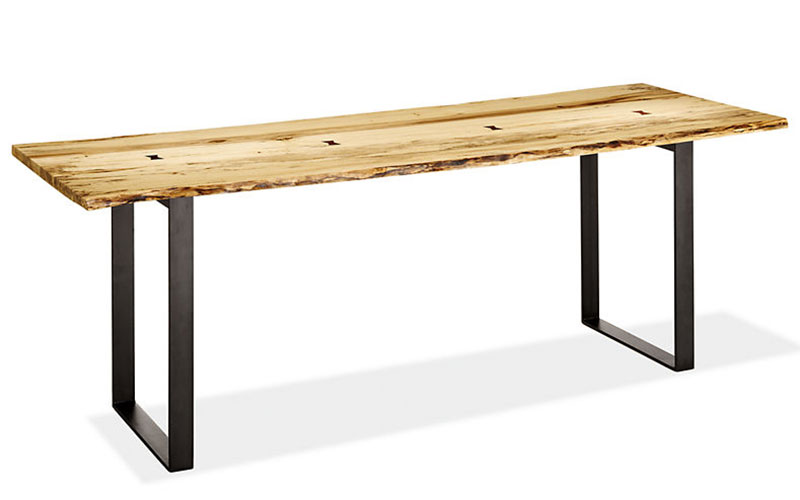Five Things to Know About Caring for Wood Furniture

The Chilton 72w Table in Spalted Sugarberry, made by Lynodn Furniture for Room & Board. Photo provided
Despite the demand for lacquer and lucite, its hard to find a home where wood furnishings aren’t part of the mix. Since maintaining heirloom-quality wood over time takes some mindfulness, Vermont’s Lyndon Furniture, a producer of fine hardwood pieces for over 30 years, shared tips we may not have learned from mom.
1. You’re probably dusting incorrectly. Choose a soft, lint-free cotton cloth, like an old t-shirt or dish towel. Add a few drops of water—just enough to make dust adhere to the cloth. Wipe dust with gentle oval motions that go along with the grain of the wood. Follow with a dry soft cloth.
2. You actually do need a coster (and a trivet, and a placemat). Wood finishes are moisture resistant, but not impervious. Even when finished wood can absorb condensation or be damaged by heat. Firm writing can scar the surface. Even rubber feet and lamp bases can cause an adverse reaction.
3. Aging is natural and okay. With exposure to sunlight, cherry will darken to a reddish brown tone. Maple and oak will take on a golden hue. Walnut will fade to light brown. The time is takes for a wood species to age, depends on how much light it gets. Avoid bright or direct sunlight to prevent discoloration.
4. Oily cleansers and polishers are not always best. Most wood cleansers do not provide a lasting, hard coat. Those containing silicone oil will create a nice shine, but they can interfere with refinishing.
5. Variations are a sign of quality. It’s common to find several contrasts in the same piece of furniture—the lighter pieces were closer to the tree’s bark, and the darker pieces were closer to the tree’s center. Pitch pockets and mineral deposits are natural markings that have no effect on the furniture’s durability.

Photo provided by Room & Board


